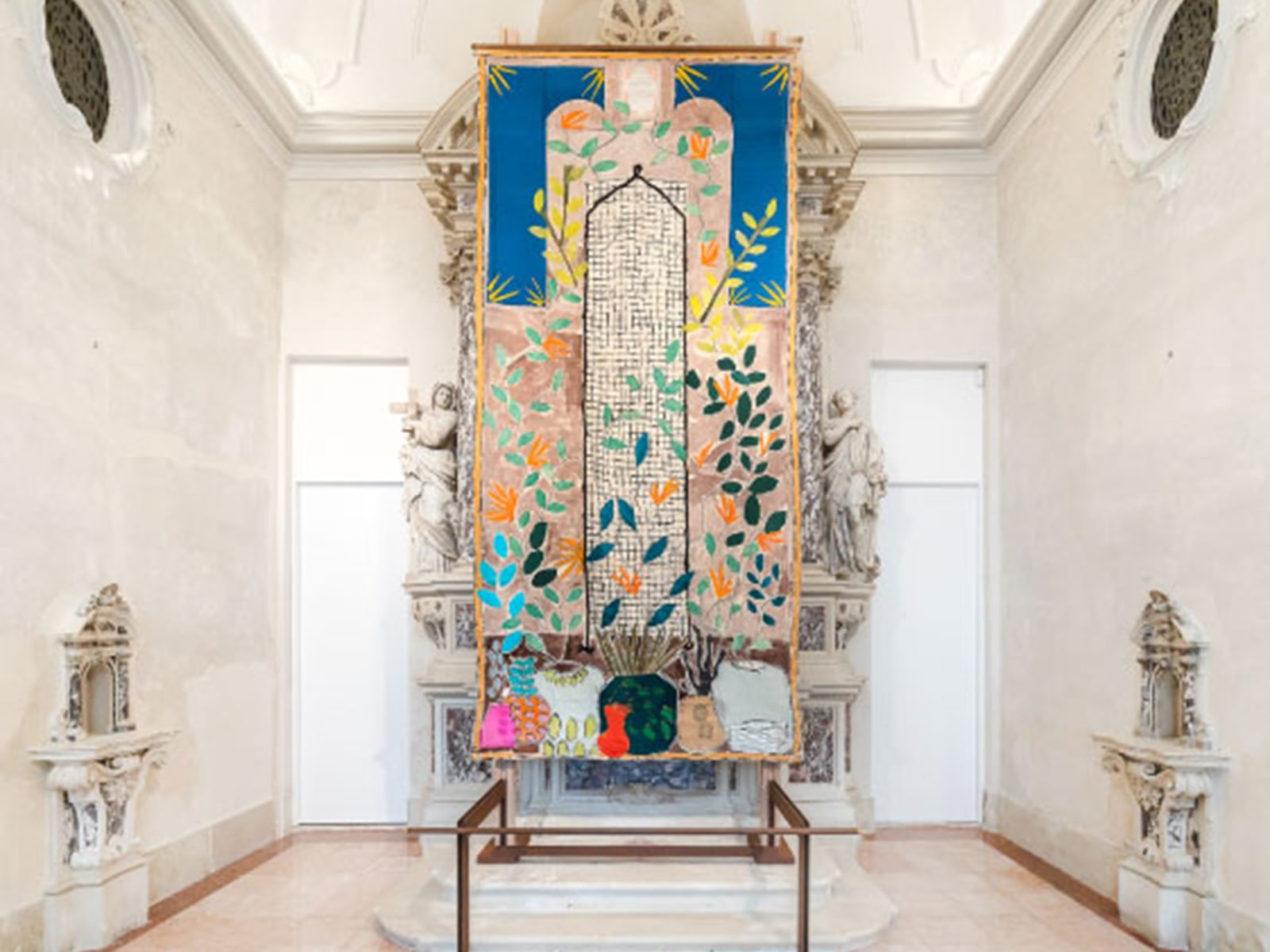
Vegetal Devotion
Blooming lilies and vines laden with bunches of grapes adorn the ancient, dark wood of the entrance door to the Church of the Dimesse in Thiene, marking the boundary between sacred and profane. In the history of sacred art, plants, flowers, and trees have always had a symbolic function, never being the subject for their own sake. Isabella Ducrot. Vegetal Devotion is the inaugural solo show of the exhibition programme at Fondazione Sandra e Giancarlo Bonollo, which, within the walls of the Complesso delle Dimesse, provides a space for subjects traditionally excluded from the anthropocentric and patriarchal gaze of Western art history.

In her book La vita femminile, artist and writer Isabella Ducrot – born 1931, Naples, protagonist of the first exhibition of the programme – reflects on the necessity of “regressing to the time of childhood” and of “always remembering to belong to the female gender […] that segment of the human population devoid of its own history”. It is precisely the absence from history that becomes the protagonist of the solo exhibitions at the Bonollo Foundation, starting from the exhibition “Vegetal Devotion.”
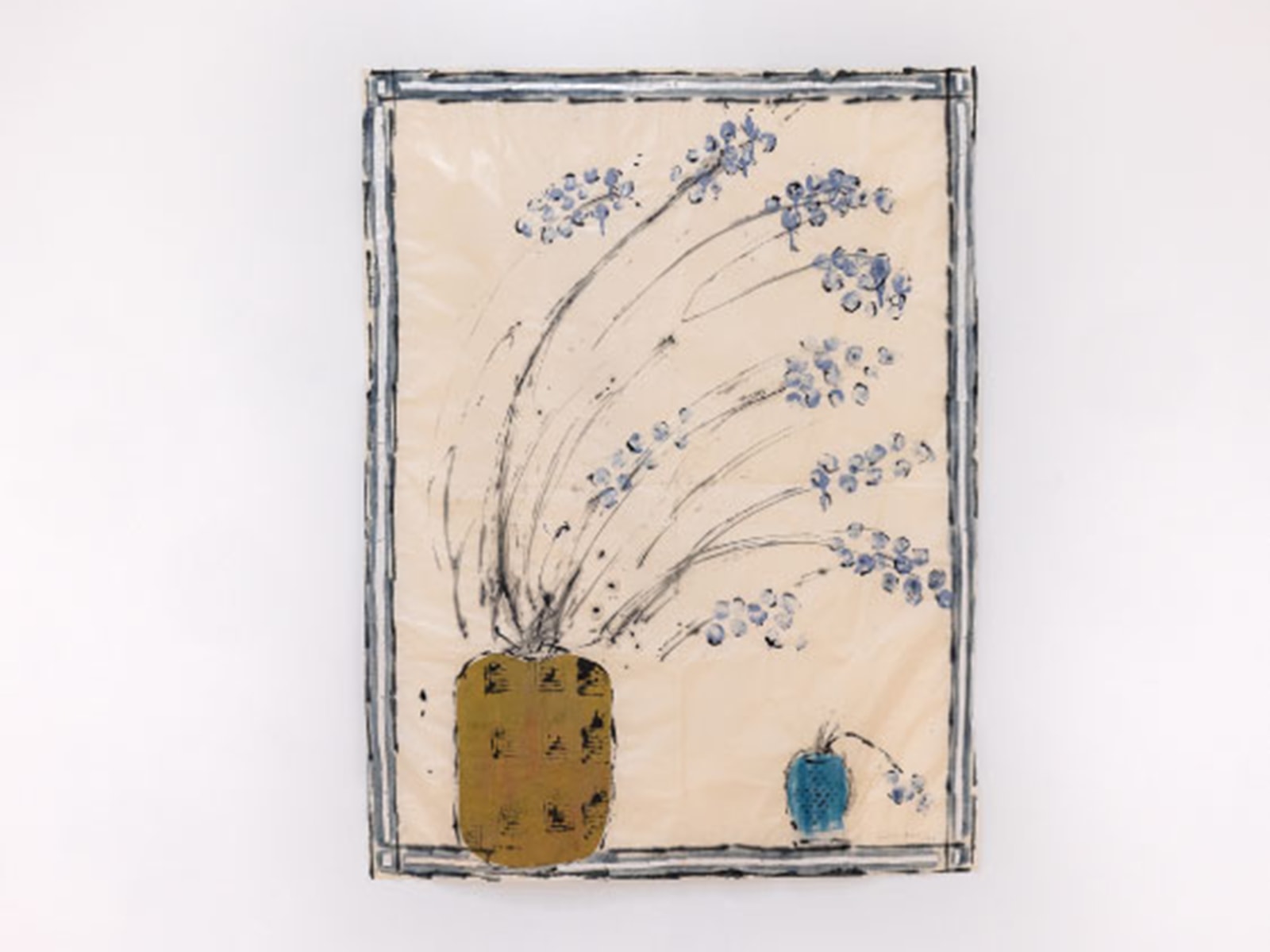
“Returning to the torpor of childhood meant living again the enchanting experience, the ineptitude of one’s tiny limbs in the vast space of the world, compared to the ease of adults who fill it with their taller and larger bodies,” continues the artist. “The evident disparity in proportions justified prohibitions expressed with mysterious phrases such as: ‘children should not interrupt when adults are talking’ or ‘children must obey’ or ‘when you grow up, you will understand’. These phrases could reasonably be translated into more truthful expressions such as: ‘do not interrupt people who occupy more space than you in the world’ or ‘when you occupy more space, you will understand’”.
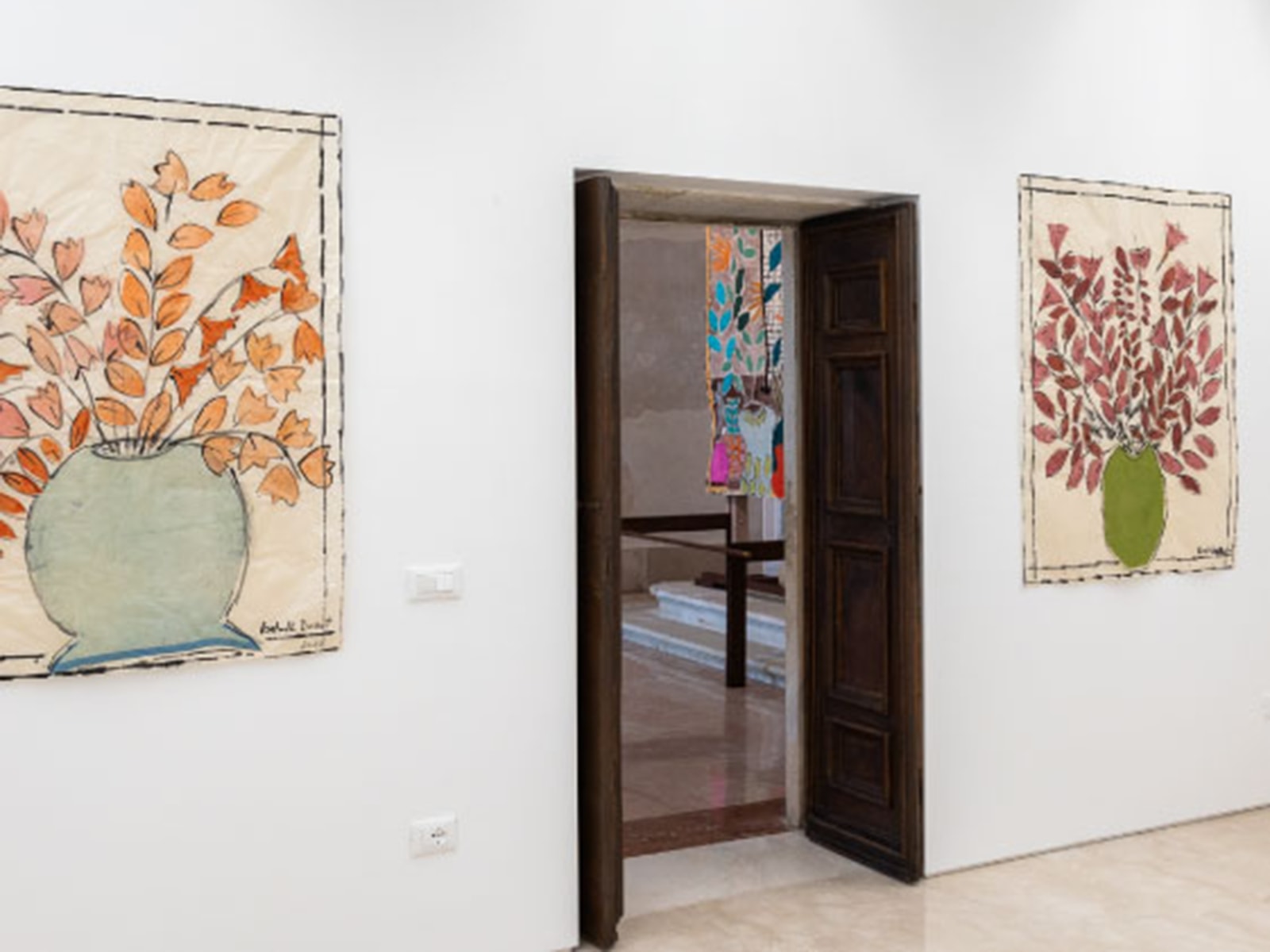
The works of Isabella Ducrot (1931, Naples), selected and created for the exhibition, depict potted plants and flowers, made by layering brightly coloured pieces of paper and fabric cuttings, together with elements like wool threads and embroidery. Taking over the space of the church and the two adjacent rooms, each composition is unique and draws from an archive of antique materials collected by the artist over the years during her several trips to Asia. Pala and Trittico – works conceived specifically for this exhibition– pay particular homage to writing and the art of calligraphy, incorporating fragments of letters sewn onto the fabrics.

“I knew the faces of my friends, and at the same time, I knew their writing. From the envelope alone, I knew who had written to me”, the artist stated to explain the choice of including a handwritten letter in the work Pala (2024). The incorporation of the letter, rendered illegible by its extremely high positioning within the artwork, is a tribute to the art of calligraphy itself, without the necessity for the ensemble of handwritten signs on paper to convey any specific message.
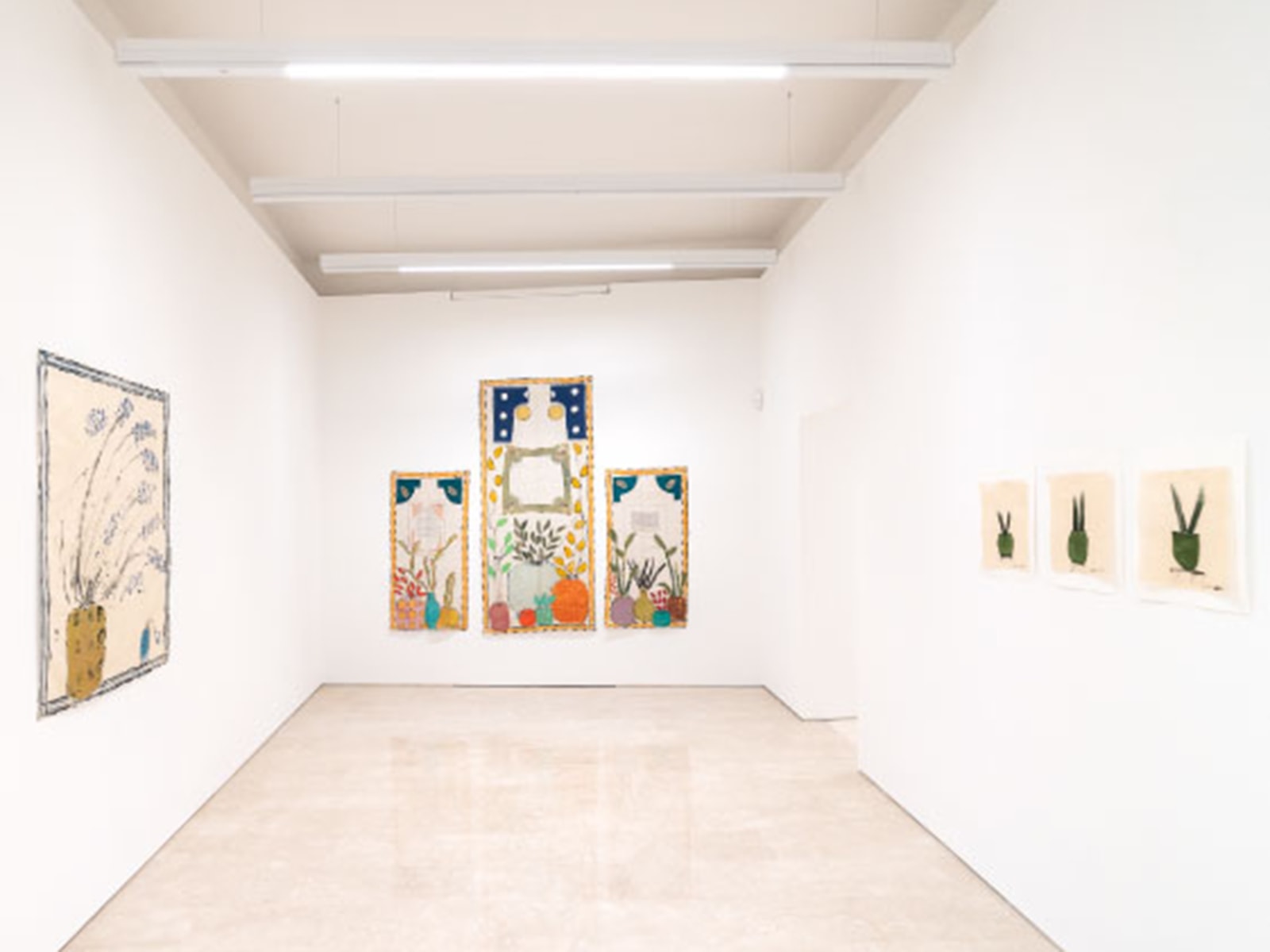
In the adjacent rooms to the church, some of Ducrot’s most recent works are displayed, featuring a series of single vases with flowers and plants. In these works, the container is the main subject, characterised by different colours and finish, in accordance with their content. More than solid arrowheads and spearpoints, it is more likely the vase that is humanity’s first technological invention, stimulated by acts of foraging and care, as anthropologist Elizabeth Fisher asserted, later referenced by Ursula K. Le Guin in her essay The Carrier Bag Theory of Fiction (1986). Traditionally used to carry water, gather berries and other fruits, or transporting objects from one place to another, Ducrot’s vases are, instead, without function and without excuses: they are beautiful, ornamental, poetic.
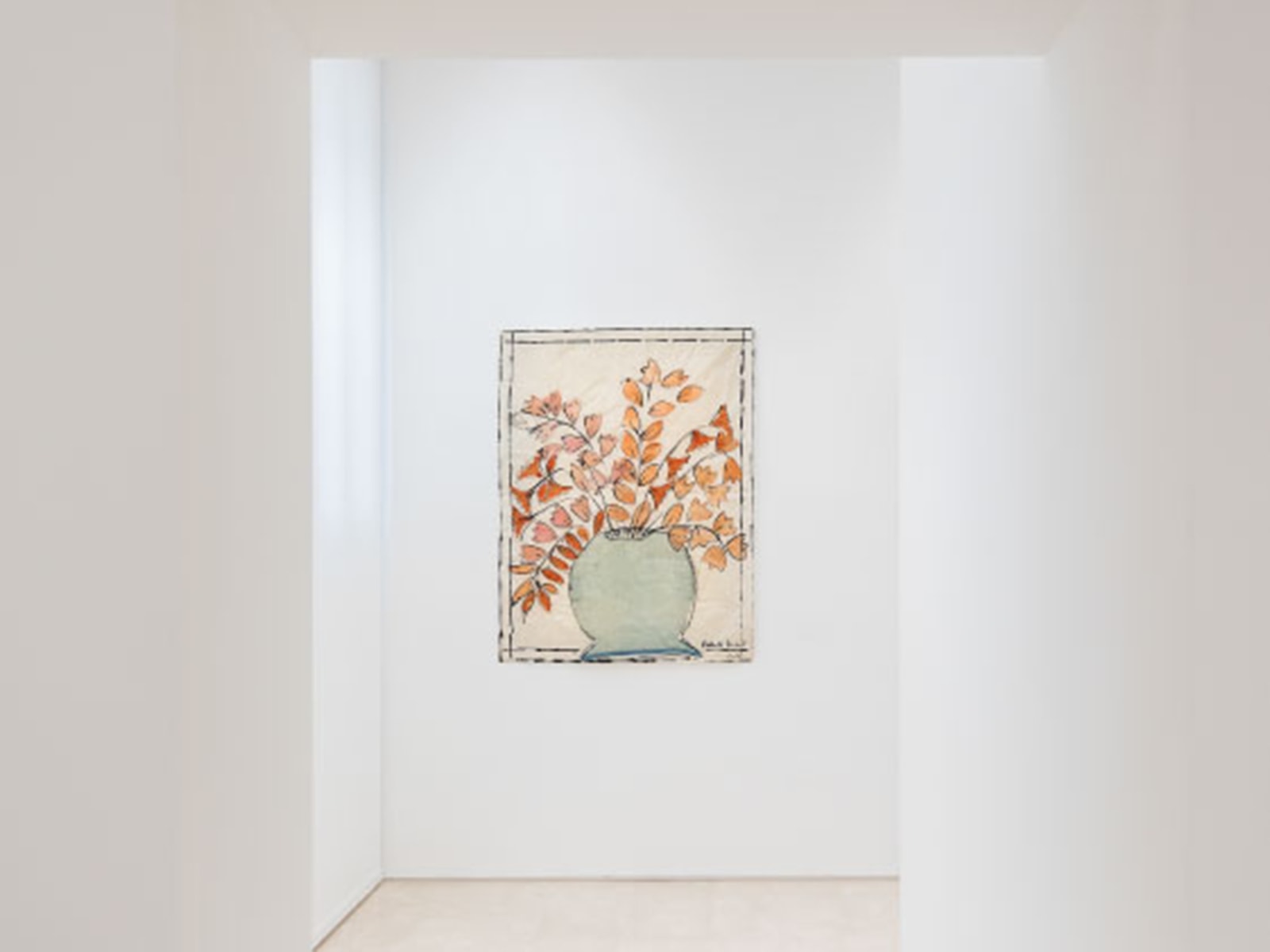
Oh! Oh! Oh! Oh! Oh! Oh! Oh! Oh! reads a text that the artist wrote and incorporated into the Triptych created specifically for the exhibition. The combination of the letters “o” and “h” does not result in a meaningful word, yet it is a common syllable in spoken language. Ducrot attributes it to an expression of helplessness, of defeat, reflecting a lack of confidence in words in the face of feelings so painful they become unspeakable. In those syllables of dismay, repeated to the point of loosing meaning, lies the essence of the works included in Vegetal Devotion: a form of silent prayer and devotion in the presence of the mystery of life in its simplest form.